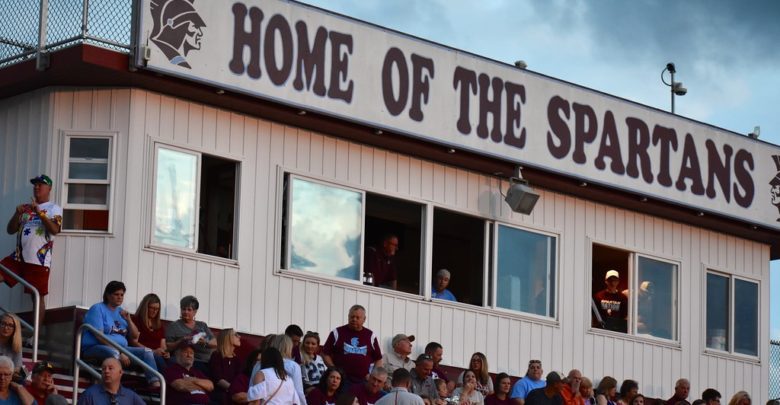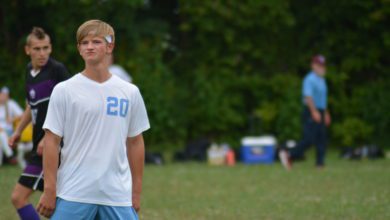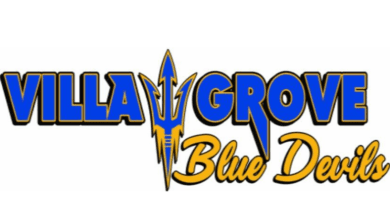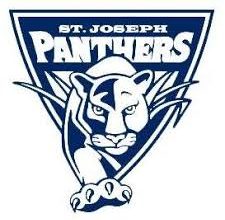Phase 4 of IHSA Return to Play approved

The Illinois Department of Public Health has approved the IHSA’s Phase 4 Return to Play plan. The plan can be instituted by local high schools on July 5.
A few weeks ago, Phase 4 was designated as Stage 2, but IHSA has decided to match the verbiage used in the Restore Illinois Plan. The IHSA Stage 1 Return To Play Guidelines, which were implemented on June 5, will now be referred to as the Phase 3 Return To Play Guidelines for the same reason.
“Safety remains at the forefront of everything that the IHSA is doing as we move into Phase 4 and beyond,” said IHSA Executive Director Craig Anderson. “We appreciate the collaborative efforts of the SMAC and IDPH in recognizing the physical, mental, and emotional benefits for our student-athletes and coaches as they progress into training in a more traditional practice setting. Our focus now shifts to continuing to work with state leadership to determine how to provide the safest environment possible for fall sports.”
IHSA coaches can conduct team activities on 20 contact days between June 30 and August 9. An IHSA member high school may not conduct team activities under the Phase 4 Return to Play Guidelines unless they have local school district approval, and are located in a Health Region that is currently in Phase 4 (or better) under the Governor’s Restore Illinois plan. Fans do not traditionally attend contests conducted under the summer contact day format, however, if a host school allows fans to attend, they will be limited to 20% capacity of their facility or less, based on the policy of the host school.
PRE-WORKOUT
- Schools must maintain a daily record of what athletes are participating, when, symptoms they may present.
- Athletes should be screened at the start of practice for temperature >100.4F/37C or symptoms of COVID-19 (fevers, chills, cough, muscle aches, headache, sore throat, runny nose, nausea, vomiting, diarrhea, or loss of taste or smell).
- Any person with symptoms or a positive COVID-19 test, should not participate in practice, competition, or conditioning and should be referred to a physician for evaluation and only return after clearance to do so from a physician.
- Signage about symptoms and transmission of COVID-19 should be posted around facilities.
- Gatherings of up to 50 individuals, indoors or outdoors, are allowed. Thirty feet of space must be maintained between gatherings of 50.
- When students are not actively participating in a drill, practice, or contest, care should be taken to maintain social distance between individuals.
- If locker rooms are a necessity, capacity should be limited to ensure members can maintain 6 ft of social distance.
- Individuals should sanitize or wash their hands for a minimum of 20 seconds with warm water and soap before touching any surfaces or participating in workouts.
- Appropriate clothing/shoes should be worn at all times in the weight room to minimize sweat from transmitting onto equipment/surfaces.
- Students must be encouraged to shower and wash their workout clothing immediately upon returning to home.
FACILITIES CLEANING
- Adequate cleaning schedules, before and after each use by a group of athletes, should be created and implemented for all athletic facilities to mitigate any communicable diseases.
- Prior to an individual or groups of individuals entering a facility, hard surfaces within that facility should be wiped down and sanitized (chairs, furniture in meeting rooms, locker rooms, weight room equipment, bathrooms, athletic training room tables, etc.).
- Hand sanitizer should be plentiful and available to individuals as they transfer from place to place.
- Weight equipment should be wiped down thoroughly before and after an individual’s use of equipment.
PHYSICAL ACTIVITY AND ATHLETIC EQUIPMENT
- On June 26, or when your region reaches Phase 4, summer contact days will begin. Coaches are encouraged to use a staged approach to build back up to full summer contact activity and competitions. Local districts should work with their health departments and local school officials to make decisions about team travel to summer competitions.
- Athletes who did not participate in Stage 1, are encouraged to follow the fall acclimatization schedule for any sport.
- Football players should maintain their summer acclimatization schedule, per IHSA By-Law 3.157.
- There should be no shared athletic towels, clothing, or shoes between students.
- Hand sanitizer or hand washing stations should be plentiful at summer contact events.
- Athletic equipment such as bats, batting helmets and catchers gear should be cleaned between each use. Other equipment, such as hockey helmets/pads, wrestling ear guards, football helmets/other pads, lacrosse helmets/pads/gloves/eyewear should be worn by only one individual and not shared.
- Shared equipment such as athletic balls, thud pads, sleds should be cleaned frequently during practice and competitions.
- In Stage 2 spotters for weightlifting are allowed. Maximum lifts should be done only with power cages for squats and bench presses. Spotters should stand at each end of the bar.
HYDRATION
- All students shall bring their own water bottle. Water bottles must not be shared.
- Hydration stations (water cows, water trough, water fountains, etc.) may be utilized to fill individual water bottles but must be cleaned after every practice/contest.
CONTESTS
- Group sizes should be limited to 50 total participants, coaches, and referees (i.e. excludes spectators).
- Any additional team members can sit on the sidelines 6 feet apart from one another.
- During the use of summer contact days, multiple groups of 50 or fewer participants are permitted in a facility at once as long as: facilities allow for social distancing of students, coaches, and spectators o 30-ft of distancing is maintained between groups/ opposing teams on the sidelines, and o areas for each group are clearly marked to discourage interaction between groups outside competitive game play.
- Schools must have information posted at entrances and around facilities explaining the transmission as well as symptoms of COVID-19, encouraging all visitors to maintain social distance, and reminding people to stay home if they feel sick or have any of the symptoms of COVID-19: temperature >100.4 F/37 C, fevers, chills, cough, muscle aches, headache, sore throat, runny nose, nausea, vomiting, diarrhea, or loss of taste or smell.
- If schools choose to permit spectators, there should be a designated area for spectators with existing seating capped at 20 percent of capacity.
- Visual markers shall be displayed at queue points (Check-ins, along sidelines, concessions, bleachers, etc.) to help people maintain social distance.
- Concession stands may open in line with restaurant businesses physical workspace guidelines.
- Encourage spectators to bring their own chairs from home for outdoor activities.
- No handshakes, high fives, fist bumps, hugs, etc. can occur pre- or post-match.
- No spitting or blowing of the nose without the use of a tissue is allowed.
PPE
- Coaches/ participants/ volunteers may choose to wear a mask.
- Officials may choose to wear a mask and use an electronic whistle (no blow horns)





